Key takeaways:
- Label reading empowers children to make informed food choices and develop lifelong healthy habits.
- Understanding serving sizes and ingredient lists is crucial to avoid misjudgment of consumption and foster critical thinking.
- Engaging children through relatable examples and interactive activities enhances their interest in nutrition and decision-making.
- Key nutrients like protein, fiber, and calcium significantly impact children’s health and energy levels, emphasizing mindful food selection.
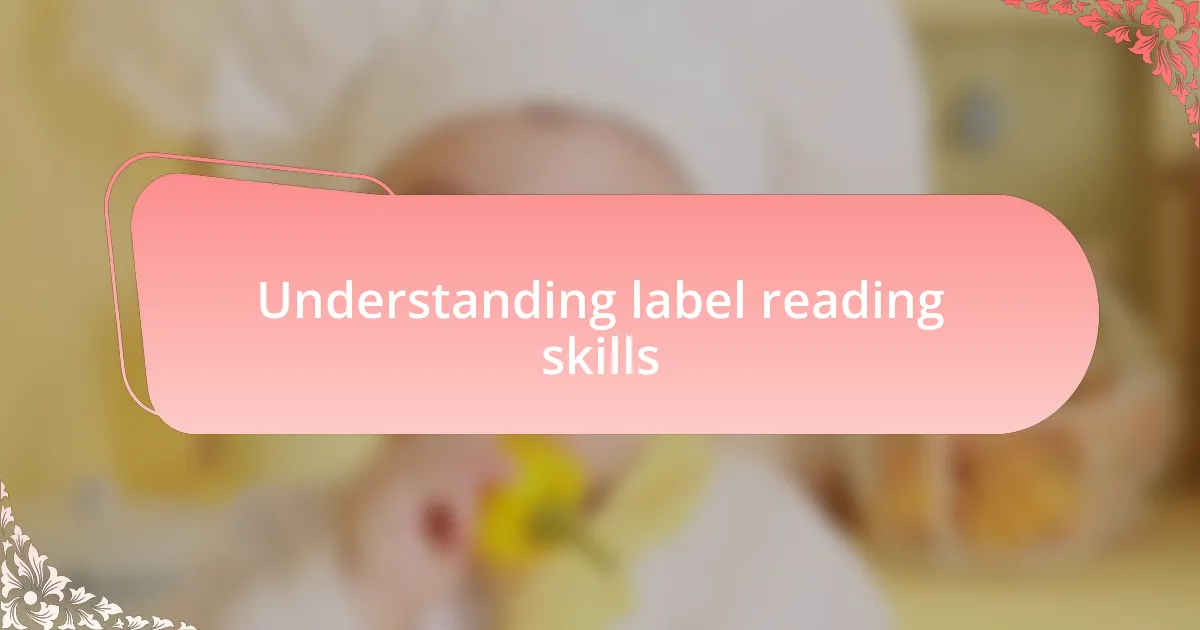
Understanding label reading skills
Label reading skills are essential for making informed choices about food and products. I remember vividly a time when I stood in the grocery aisle, overwhelmed by the barrage of options. I began noticing how the nutrition facts and ingredient lists directly impacted my choices, which sparked a realization – label reading isn’t just a skill, it’s a powerful tool for my family’s health.
When we teach children to read labels, we’re not only helping them understand what’s in their food but also instilling confidence in their decision-making abilities. Have you ever seen a child’s eyes light up when they discover they can choose something healthier? That moment is priceless. It’s a foundation for lifelong habits that promote health and well-being.
As I guide my kids through this process, I emphasize the importance of not just reading but also interpreting what they see. For instance, understanding serving sizes can change your perception of a product. Why should we care about serving sizes? Because children often misjudge how much they’re consuming, leading to unintended health consequences. In my experience, breaking down these concepts together makes the learning experience engaging and impactful.
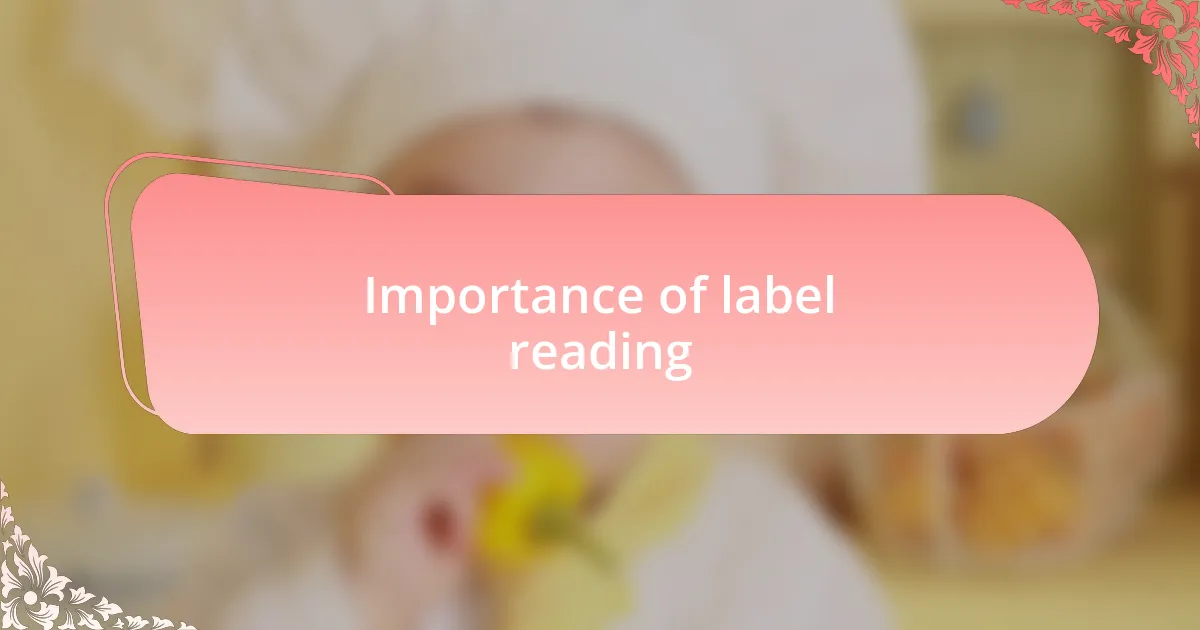
Importance of label reading
Reading labels is crucial because it empowers us to understand what we’re actually consuming. I recall the first time my child pointed out an ingredient they couldn’t pronounce. It was a lightbulb moment for both of us, highlighting the importance of transparency in our food choices. This awareness not only shapes healthier eating habits but also fosters a sense of responsibility towards our bodies.
When children learn to read labels, it’s more than just about nutrition—it’s about instilling critical thinking skills. I often ask my kids, “What do you think happens when we choose sugary snacks too often?” Their responses reveal an evolving understanding of moderation and balance. This kind of dialogue deepens their engagement with food choices and helps them appreciate the broader implications of what they eat.
Additionally, understanding label reading fosters dialogue about dietary needs and allergies. I remember a time when a family gathering had a cake that contained allergens. Teaching my children to read labels equipped them to make informed decisions, ensuring their safety while enjoying social moments. How empowering is it for a child to actively participate in their health journey? It’s about giving them agency over their choices and health.
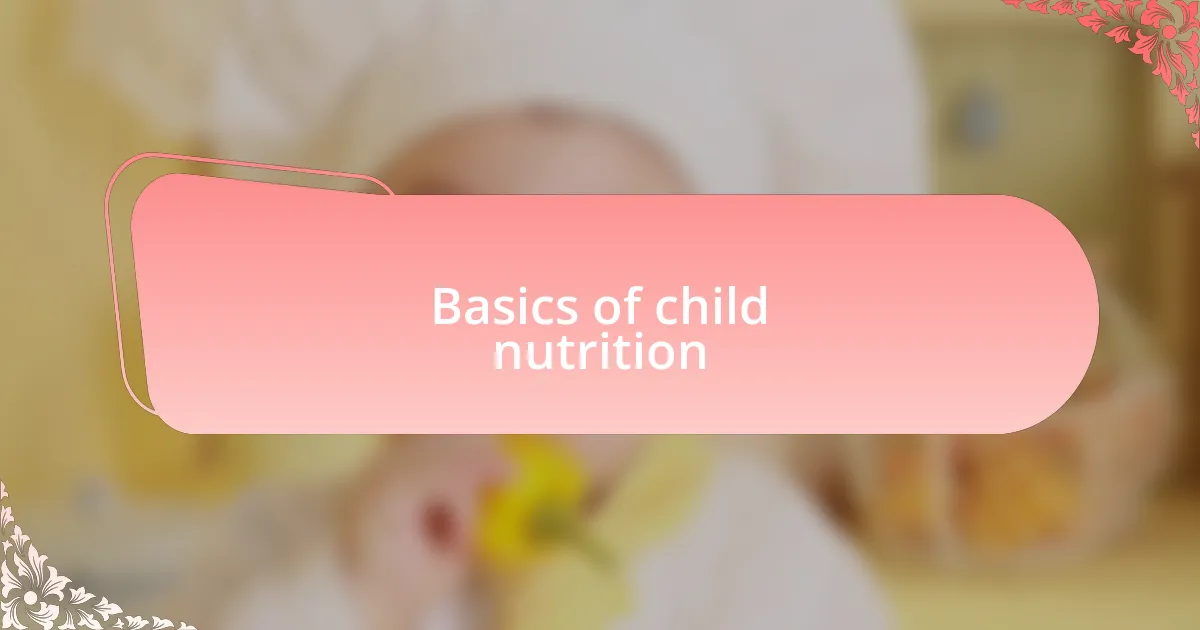
Basics of child nutrition
When discussing the basics of child nutrition, it’s essential to start with a well-rounded diet. I vividly remember when my pediatrician emphasized the importance of balancing fruits, vegetables, proteins, and grains. Seeing my child delight in colorful fruits made me realize that children are often more open to healthy options than we think; it’s all about presentation.
Portion sizes also play a significant role in childhood nutrition. I’ve noticed how easy it is to overwhelm kids with large servings, which can lead to waste or outright refusal. A simple trick that worked for us was using smaller plates for my children. Suddenly, their food was more manageable, and they were more willing to try everything. Isn’t it fascinating how such a small change can make a big difference in their willingness to eat?
Finally, an often-overlooked aspect of child nutrition is hydration. I learned the hard way that my kids are not always great at drinking water, particularly when sugary juices are around. I began keeping a fun water bottle nearby, and to my surprise, they became excited about drinking water again. It’s incredible how engagement with something as simple as hydration can promote better overall health. How can we encourage our kids to embrace water as their go-to drink? Let’s make it fun and appealing!
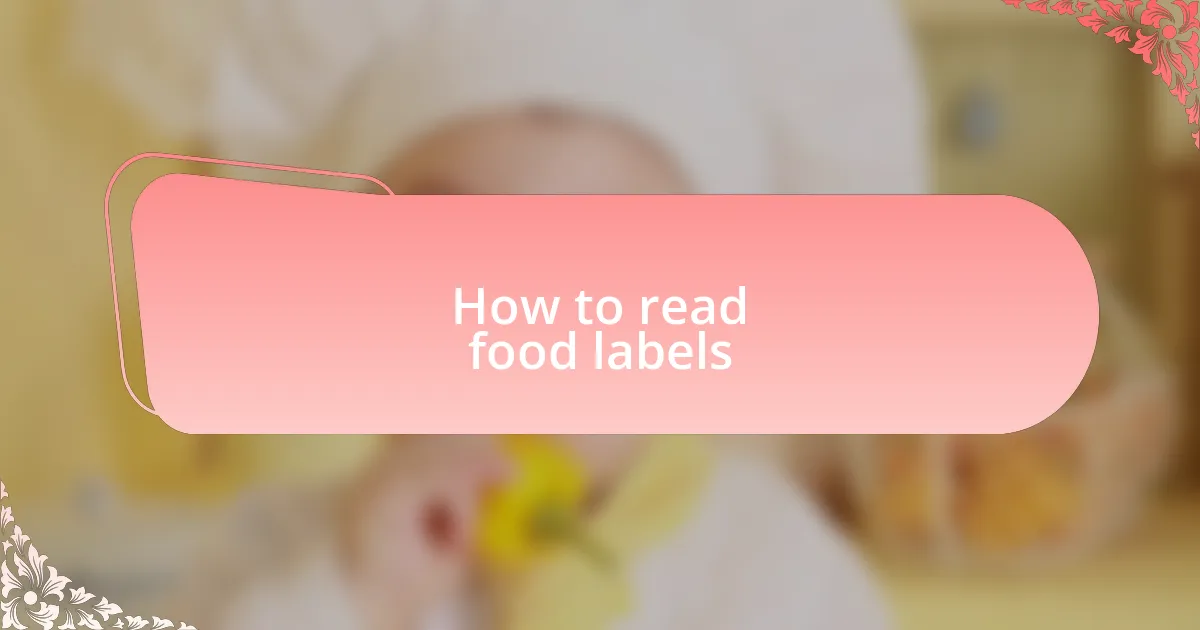
How to read food labels
To truly grasp what food labels are conveying, start with the serving size. I remember a moment in the grocery aisle, where I mistakenly thought a seemingly healthy snack was low-calorie, only to realize that the portion listed was half of what I would typically eat. It made me wonder how often we overlook this crucial detail and end up consuming more than we intended.
Next, take note of the ingredients list. I find it fascinating how some products, claimed to be “natural,” contain ingredients that are hard to pronounce or recognize. This made me more discerning about what I bring into my home. It’s a striking reminder to trust our instincts—if it sounds suspicious, maybe it’s best to put it back on the shelf.
Lastly, don’t skip the nutrition facts panel. The experience of comparing different brands opened my eyes to just how much variation there can be in sugar and sodium levels. I once chose a yogurt based solely on its colorful packaging, and my surprise at its sugar content led me to prioritize reading labels more carefully. What hidden surprises might you uncover in your next shopping trip?
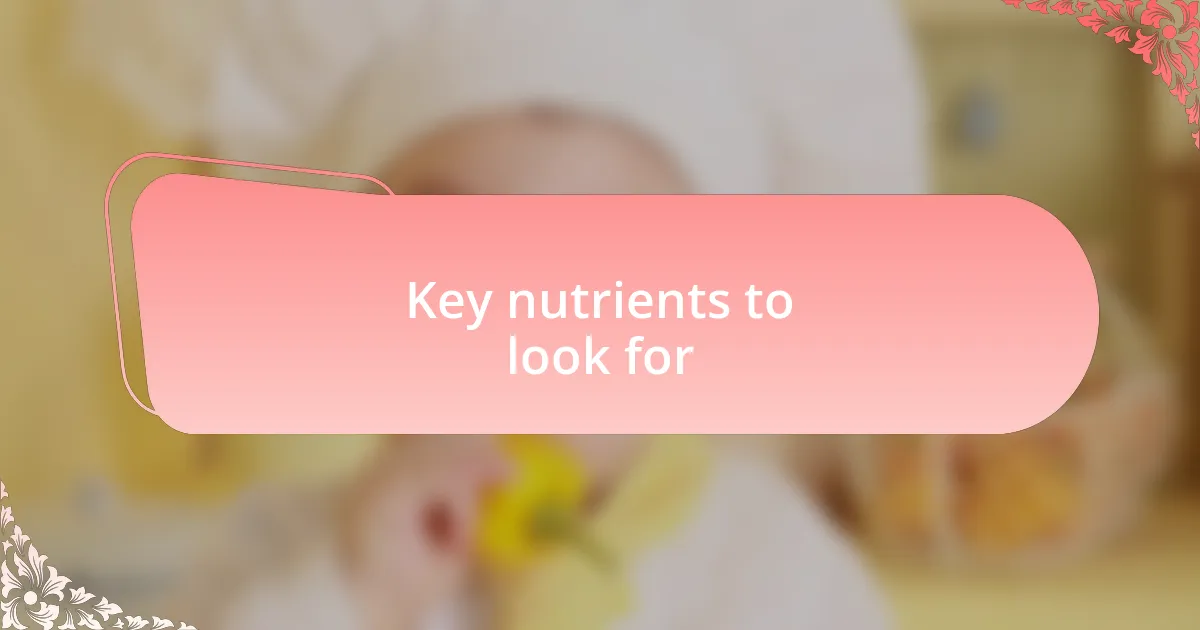
Key nutrients to look for
When scanning nutrition labels, I always focus on protein, especially for growing children. I remember a time when I swapped my child’s lunch routine from processed snacks to whole food options. That simple shift made a significant difference in their energy levels and focus throughout the day. It’s amazing how just one nutrient can impact their overall well-being so profoundly.
Another key nutrient to watch for is fiber. There was a point when I noticed my kid often felt sluggish after lunch. When I started checking for high-fiber foods, I found that adding whole grains and fruits made a world of difference. As a parent, it’s a relief to see them feeling more energetic and satisfied—and it’s all thanks to being mindful of what we’re buying.
Calcium is another essential nutrient that deserves your attention, especially for developing bones. I remember standing in front of the dairy section, uncertain about which brand to choose. That’s when I learned to compare calcium content and realized how some dairy alternatives often lack sufficient levels. Seeing their growth and strength as they enjoy fortified options just reinforces how important these little choices are for their health.
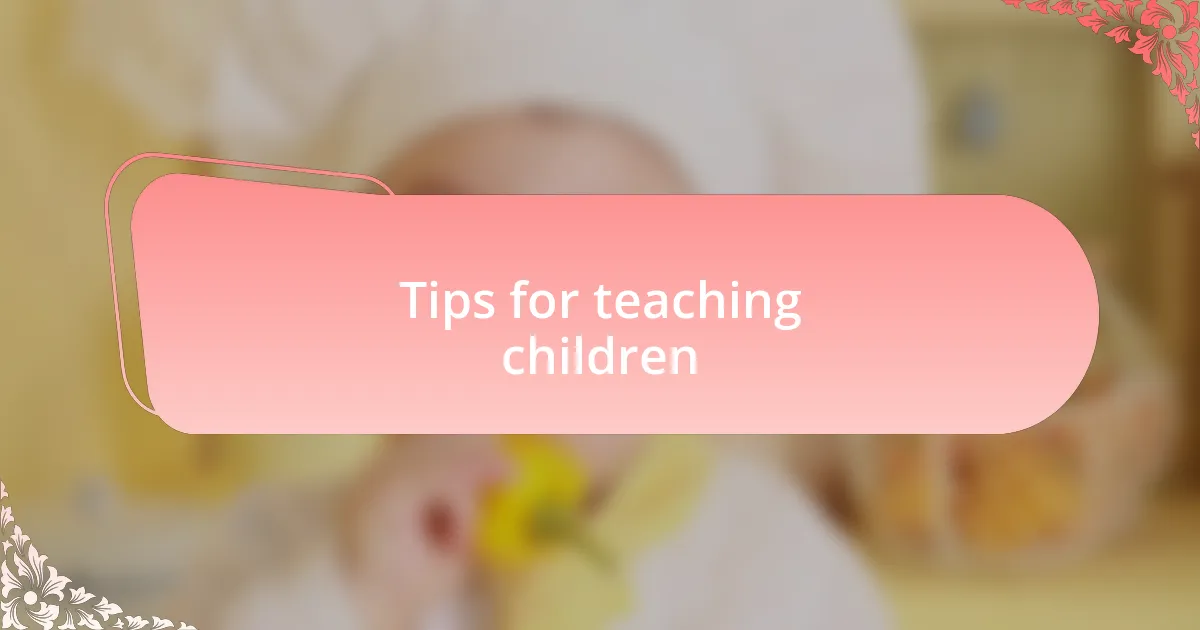
Tips for teaching children
When teaching children about reading labels, I find that making it a game can really spark their interest. One afternoon, I turned grocery shopping into a scavenger hunt, asking my child to find foods with the highest fiber content. Their excitement was palpable when they spotted a colorful cereal box boasting whole grains—it was a delightful moment that reinforced their understanding of the importance of what we eat.
Another effective tip is to use relatable examples. I often compare label reading to a treasure map, where the nutrients are hidden gems waiting to be discovered. This analogy not only makes the process fun but also helps them grasp that looking for protein or vitamins can lead to healthier choices. By linking nutrition to something they enjoy, I’ve seen my child become more engaged and curious about food.
Finally, I encourage asking questions together. I remember sitting at the kitchen table, discussing why we choose one snack over another. When my child asked, “Why is calcium important?” it opened up a conversation about bone health and strength. This dialogue not only deepens their understanding but also fosters a sense of empowerment in making informed choices. By inviting their thoughts, I’ve noticed they are more likely to remember and apply what they learn.
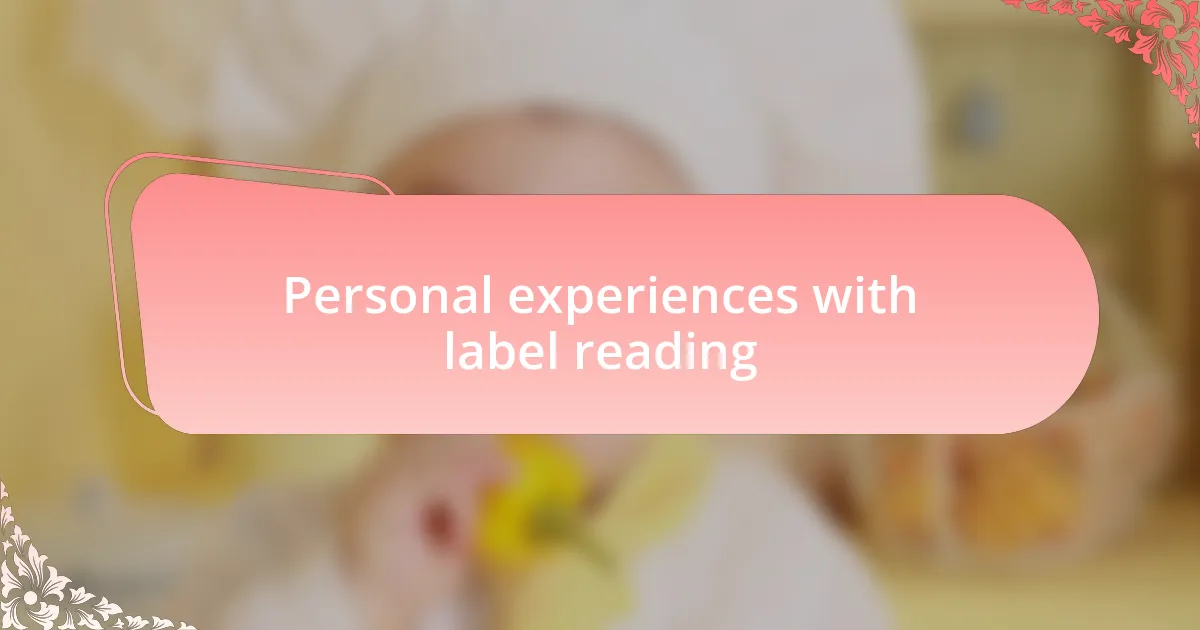
Personal experiences with label reading
One moment that stands out to me is when I first introduced label reading to my child during snack time. We went through various snack options, and as we examined the labels together, I felt a sense of pride seeing their eyes widen at the realization that some products packed more sugar than others. It struck me how empowering it was for them to recognize these differences and realize that they had a choice in what they consumed.
I often reflect on those initial discussions about serving sizes and ingredients, which can be quite eye-opening. I remember a particular day when my child looked confused upon seeing the term “preservatives.” I took this as a teachable moment, explaining how preservatives help keep food fresh but can sometimes be linked to health concerns. It was a moment of connection, demonstrating to them that label reading isn’t just about numbers; it’s about understanding what’s in our food and how it affects our bodies.
As we continued our label-reading journey, I was surprised by the questions that emerged. One afternoon, while looking at a juice carton, my child asked, “Why does this one say ‘100% juice’ but has added sugar?” This simple query led to a rich discussion about marketing and what it truly means to make healthy choices. It reminded me how important it is to engage children in these conversations, as their curiosity often leads to learning moments that both challenge and enlighten us.